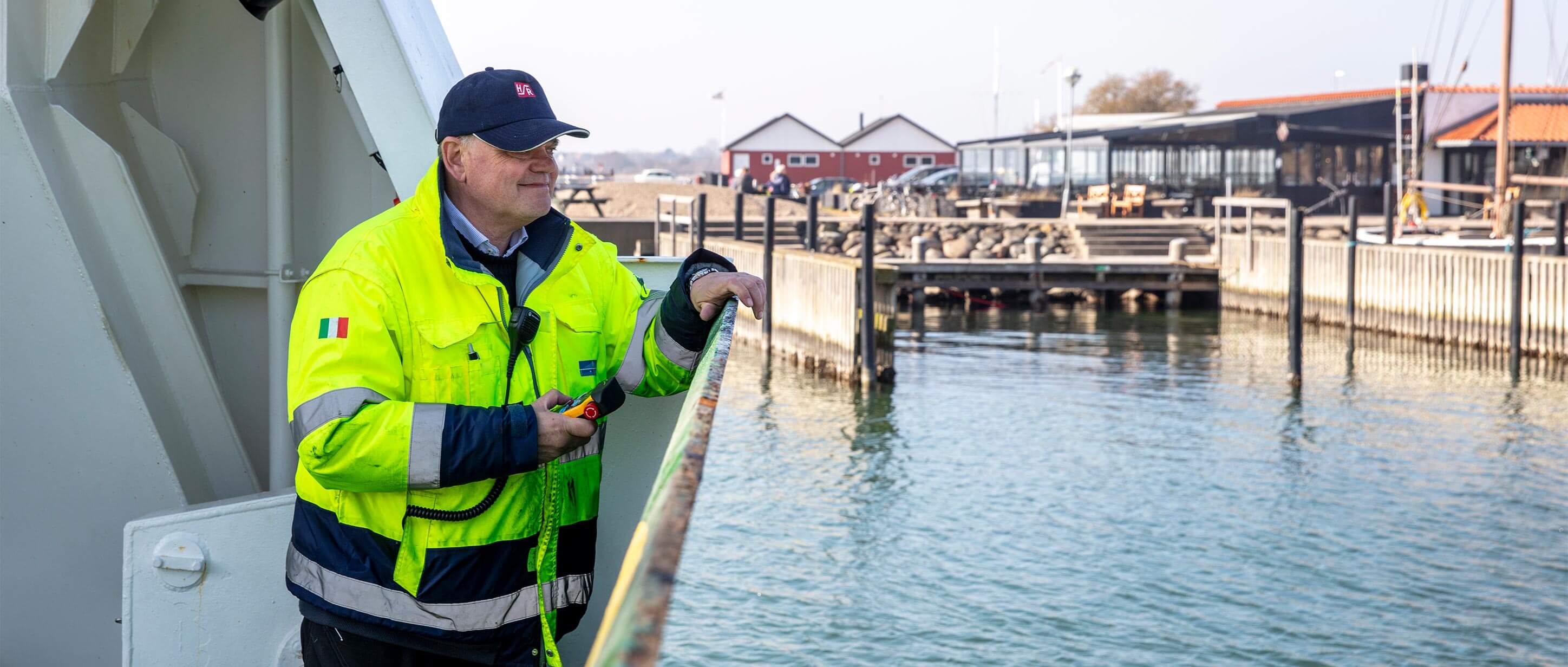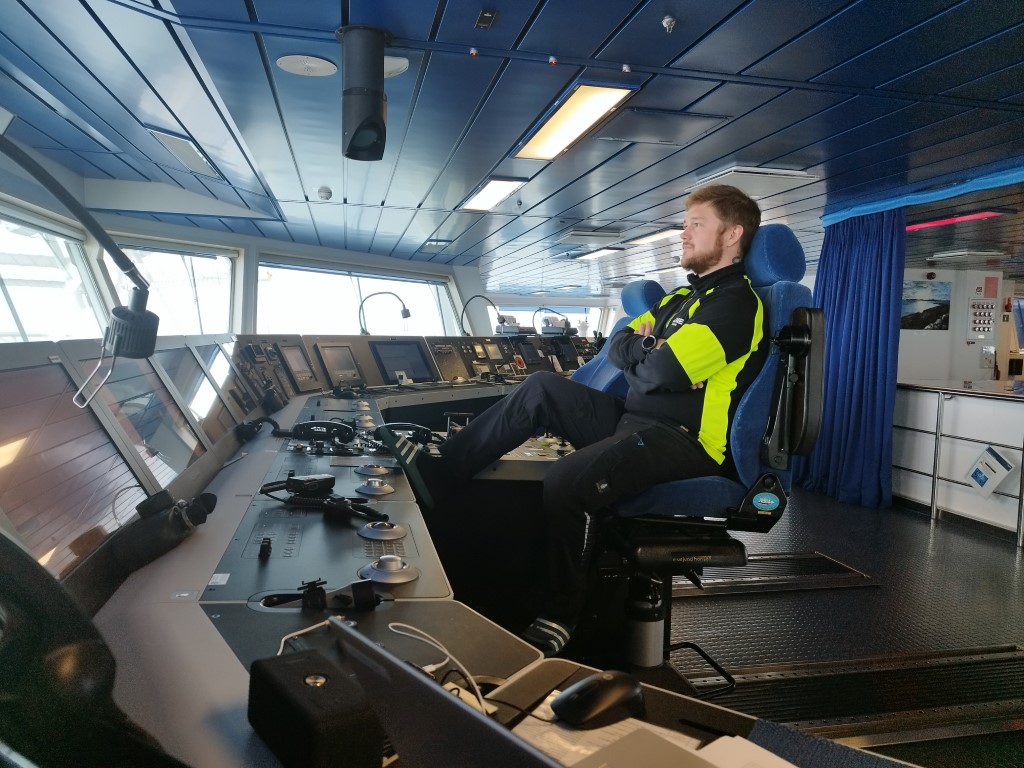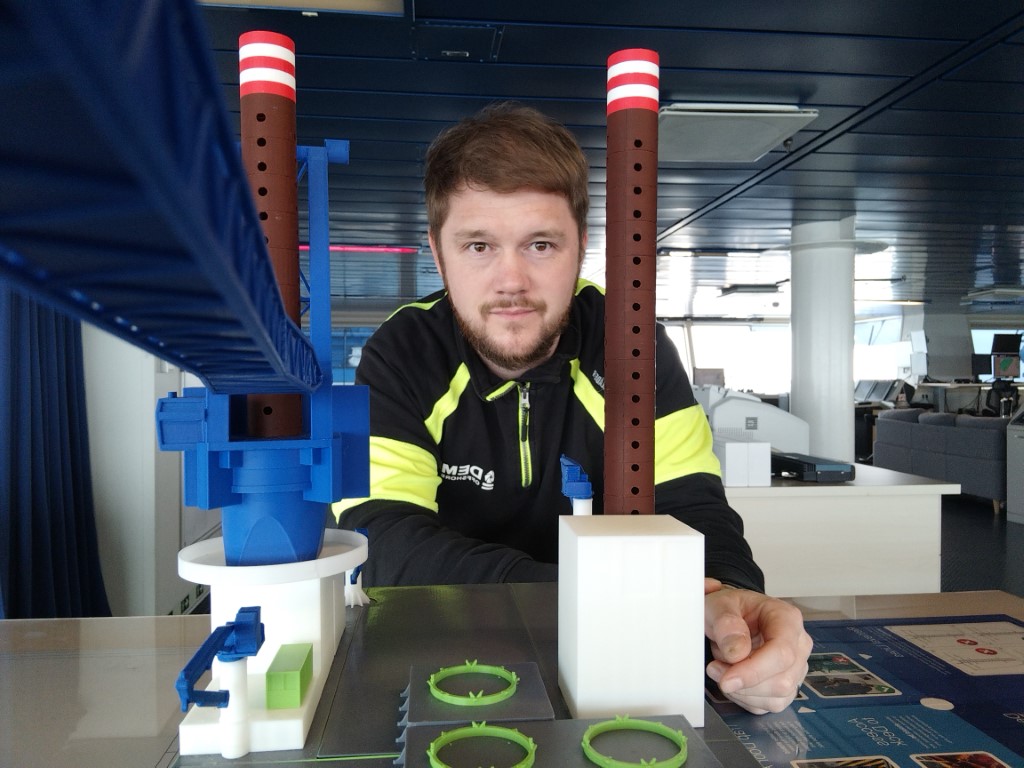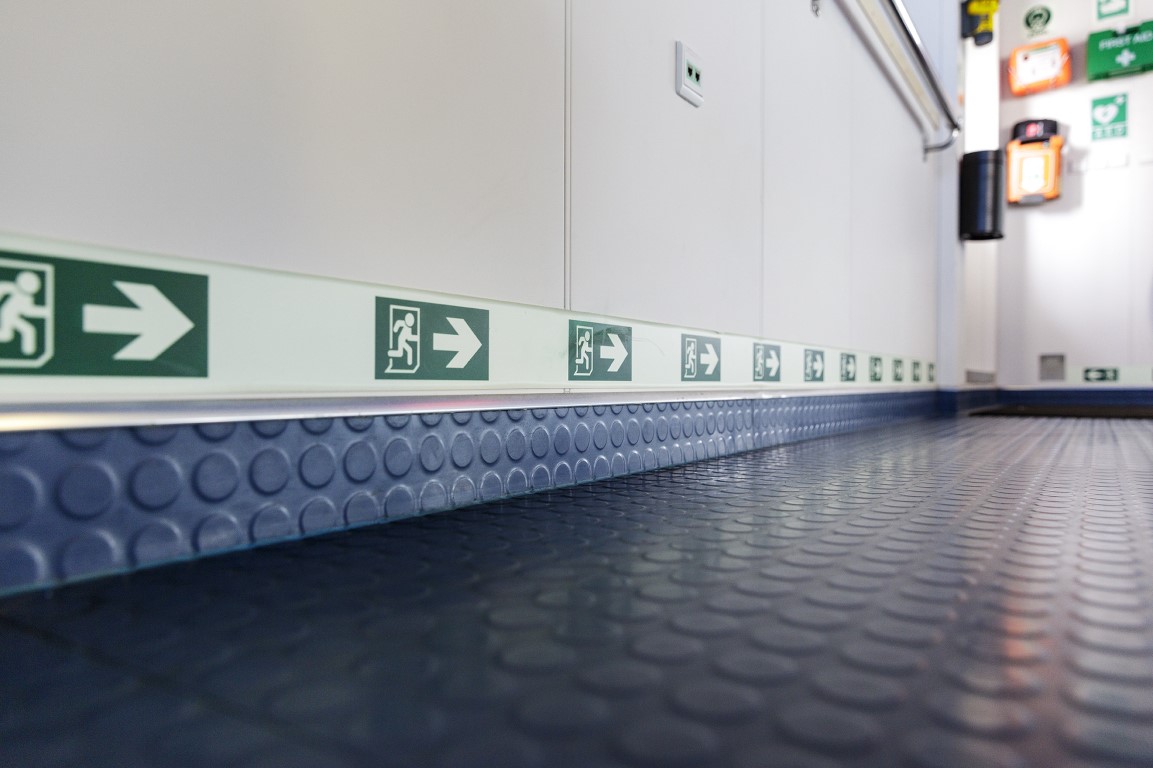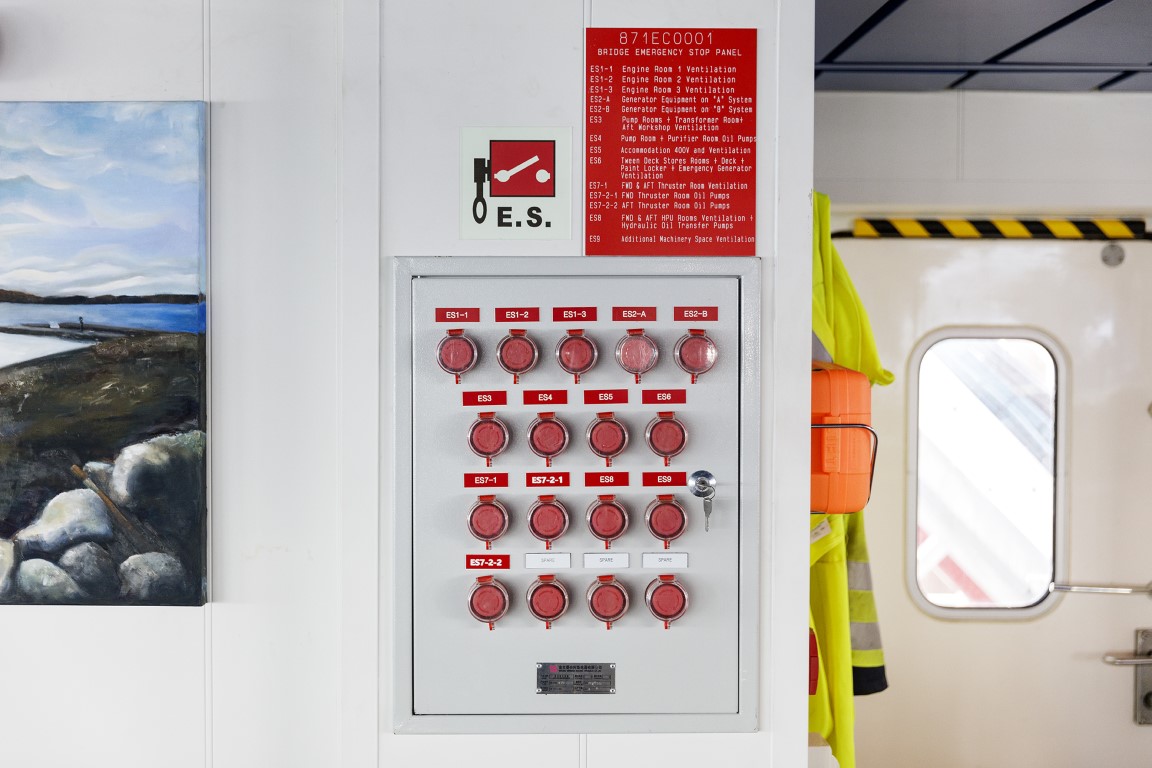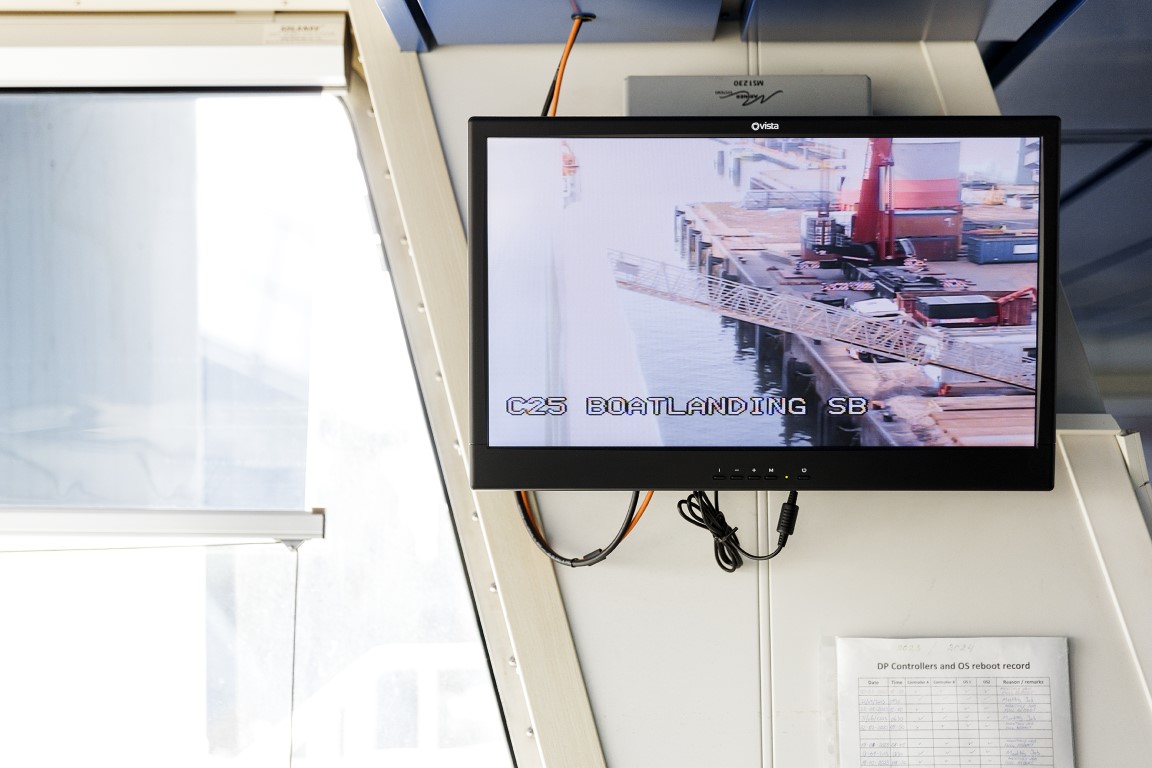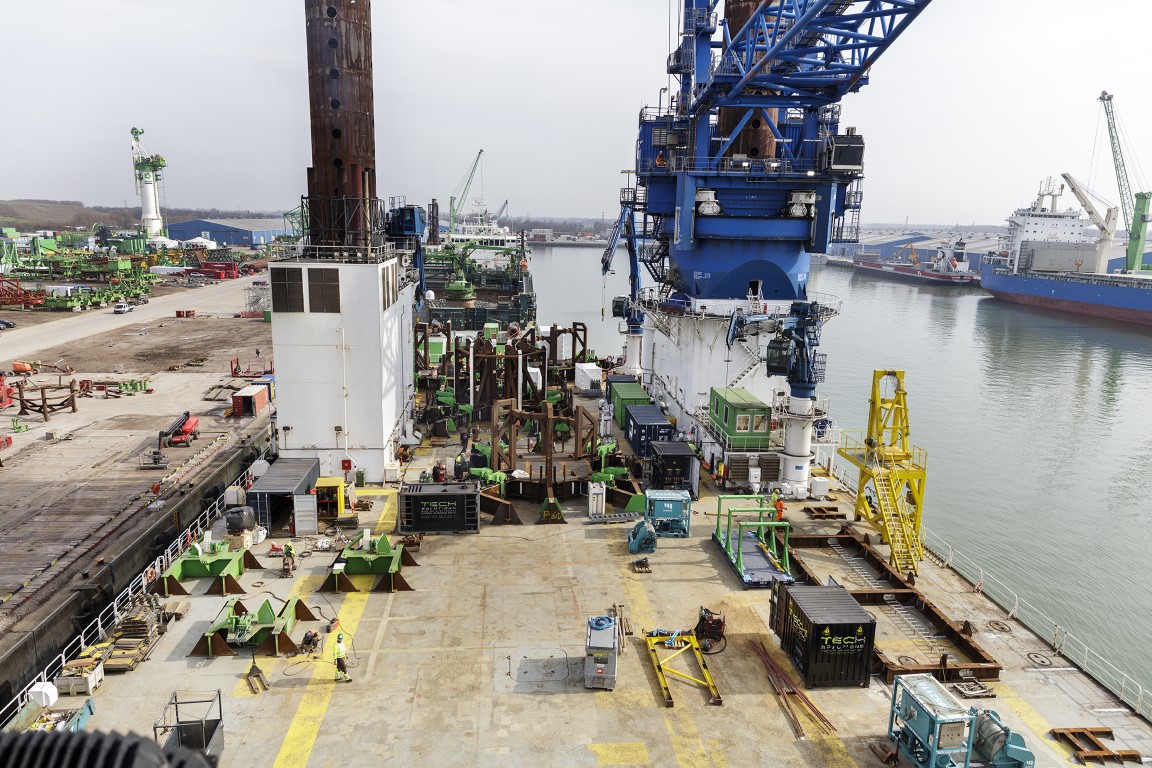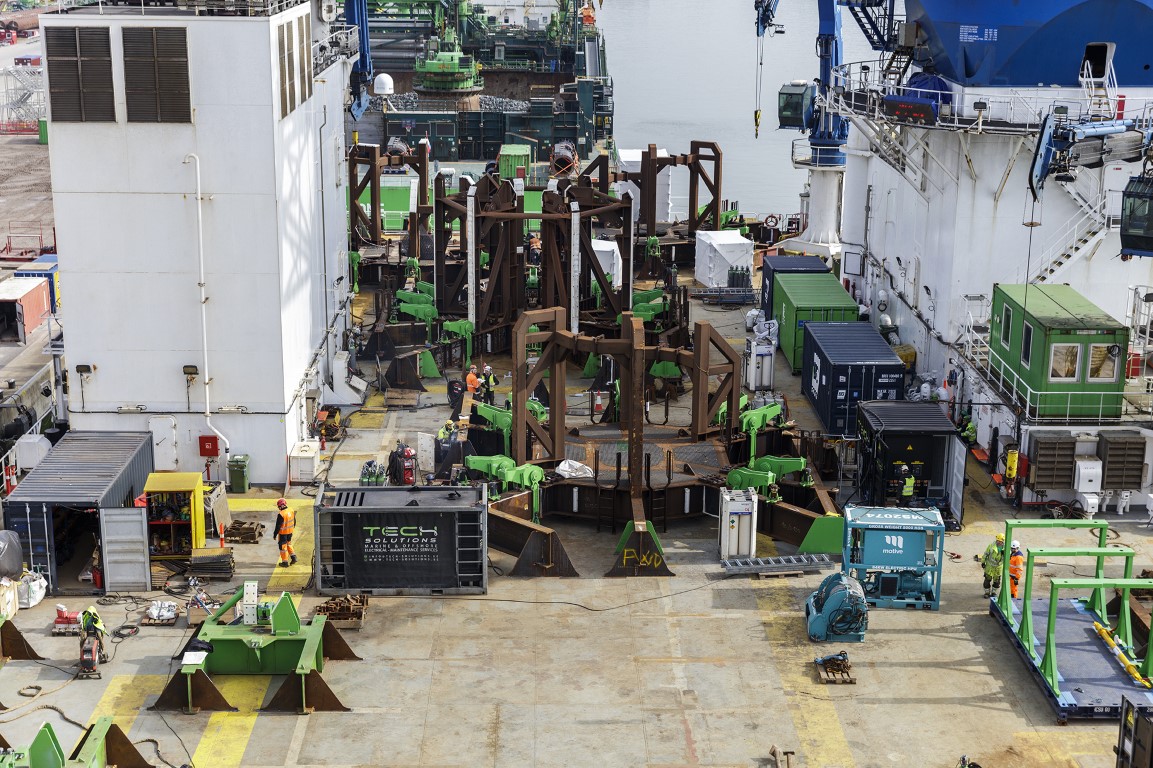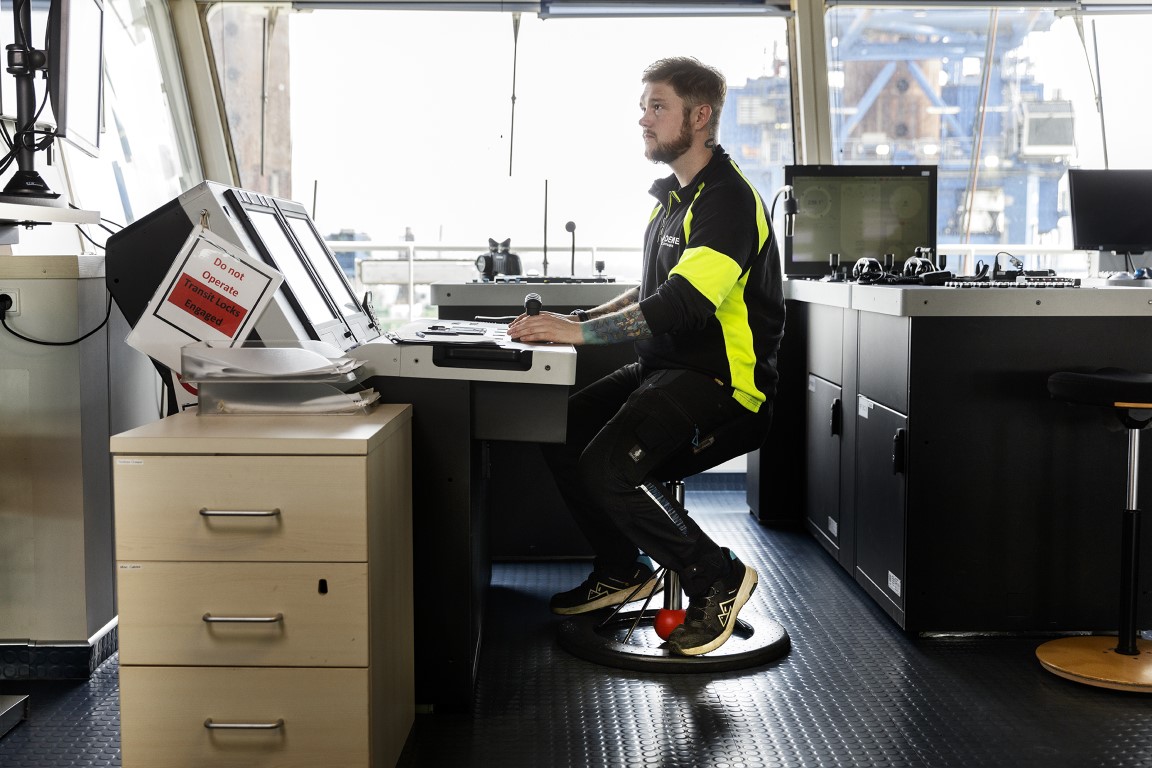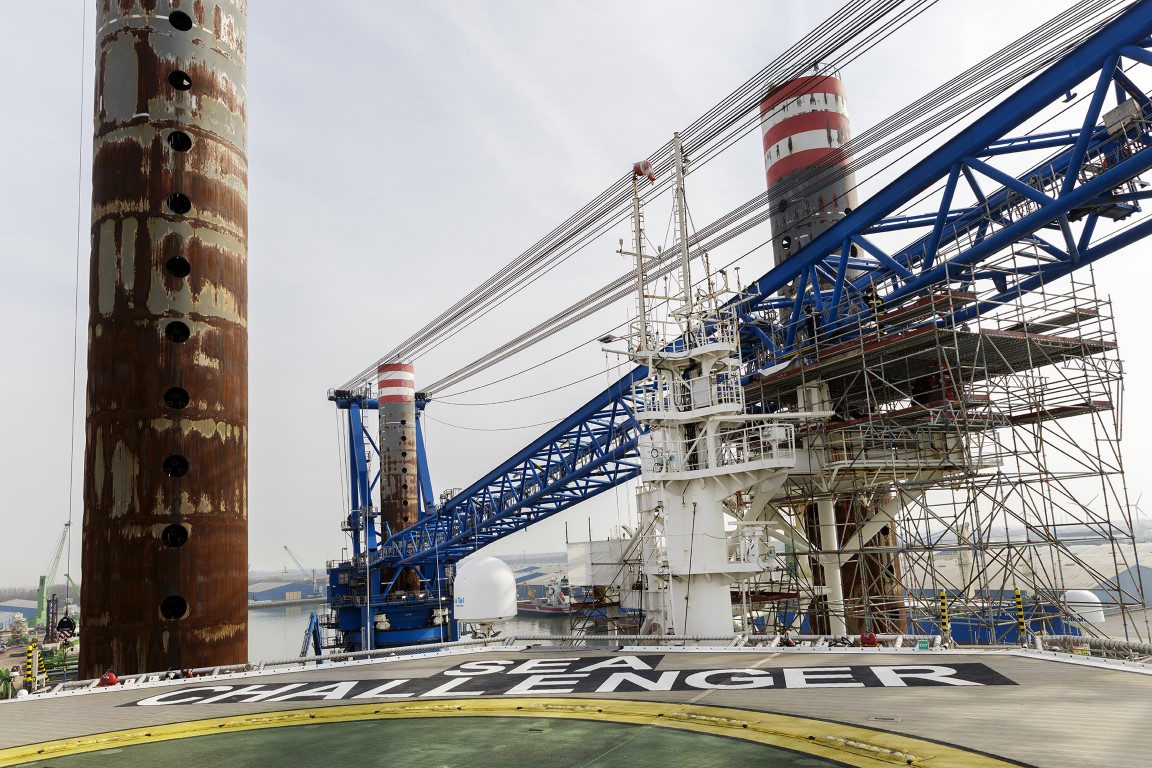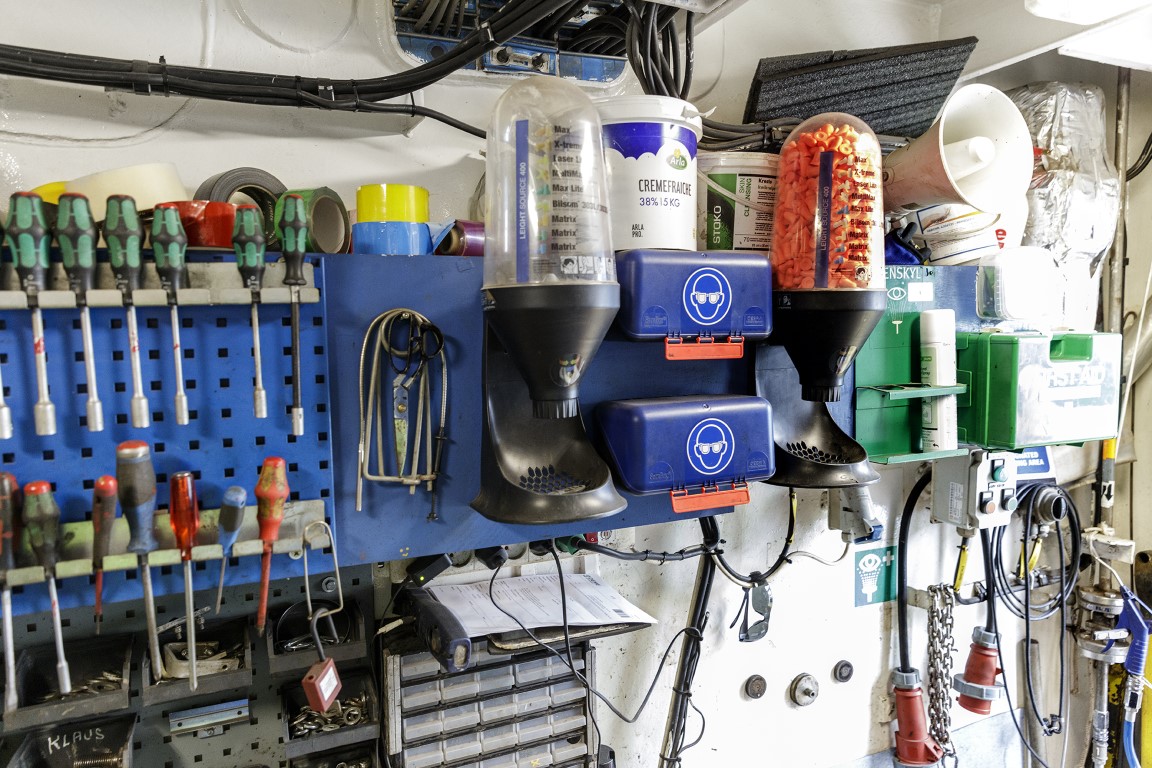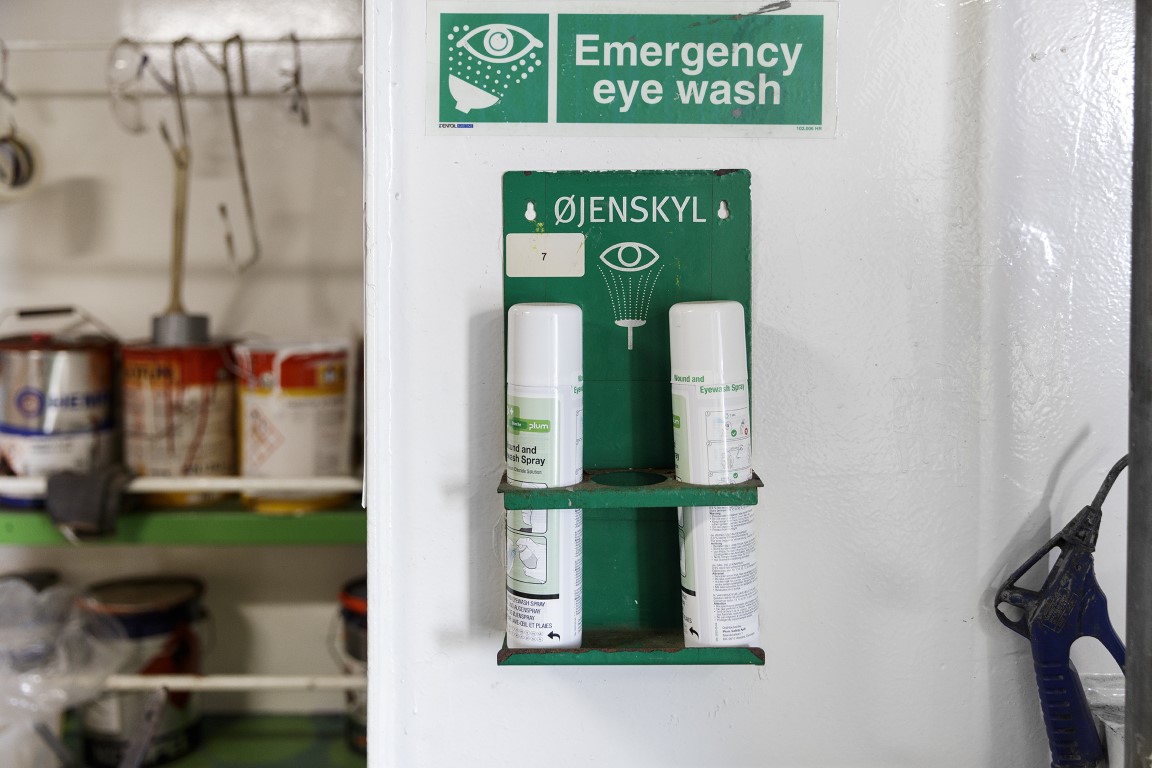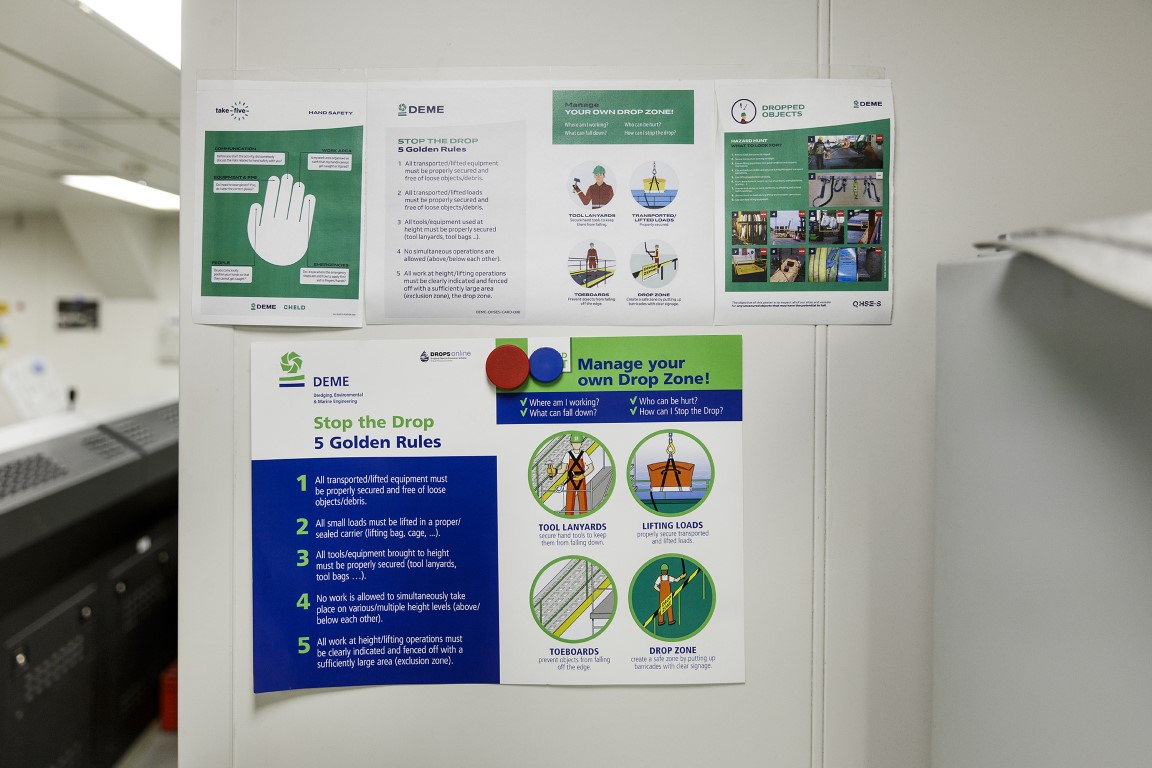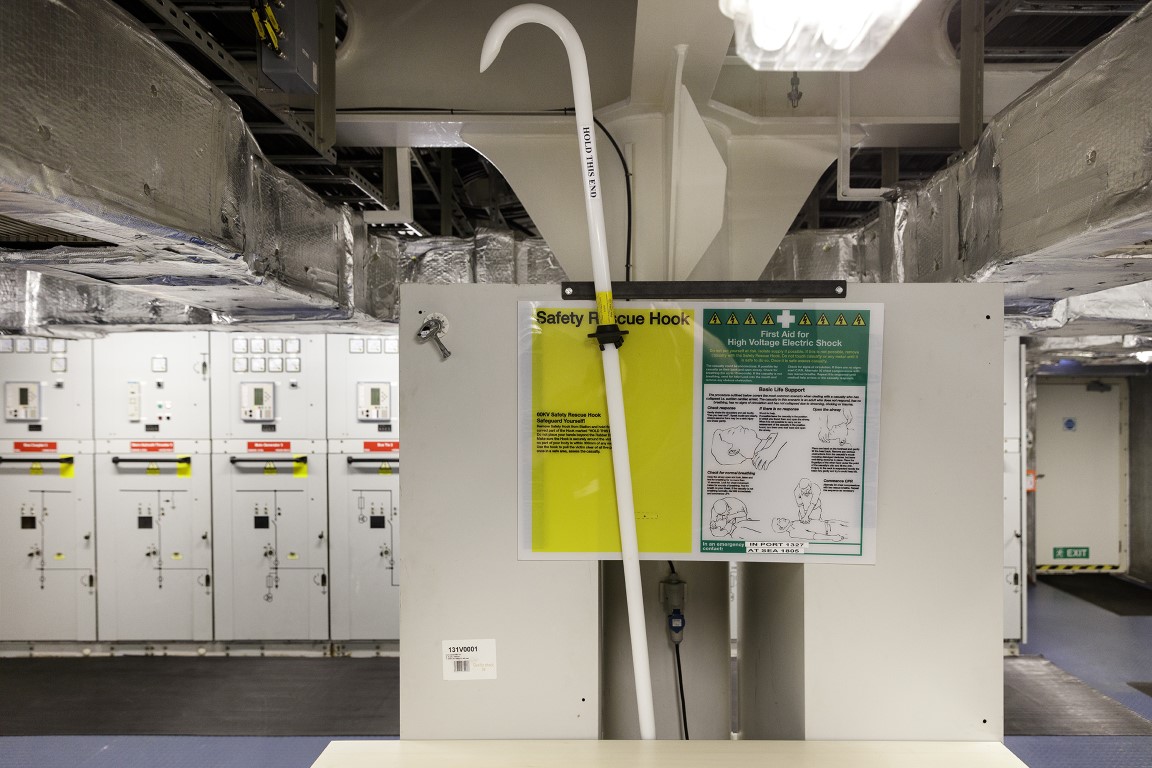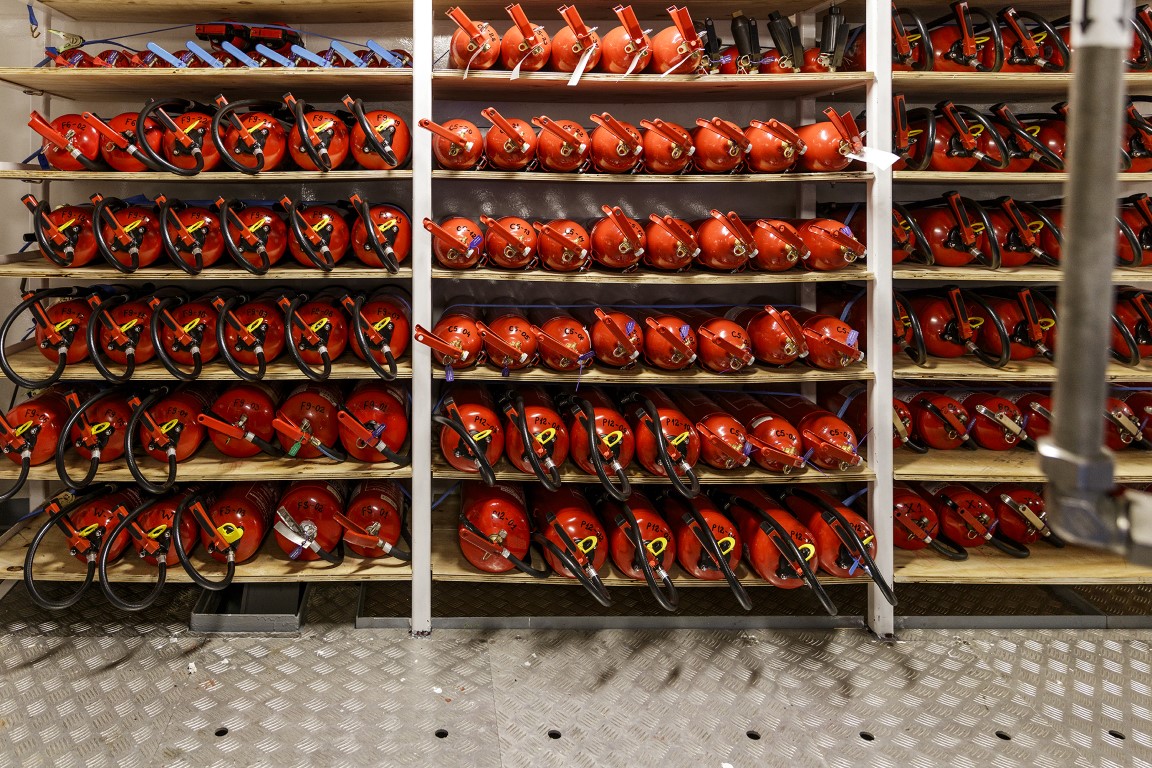For Deme Group, accident prevention is very much about creating a healthy and safe working environment on the company's vessels. This requires investments in both equipment and the mindset of the crew.
Recently, UFDS visited the offshore shipping company Ziton's jack-up rig Wind Energy in Odense, and noted on that occasion that the vessel is not like most others on the seas. However, it is not completely unique, at least the Danish-Belgian offshore company Deme Group has something similar in stable.
At the company's base in Vlissingen in the southwest of the Netherlands, we have been on board the installation vessel Sea Challenger, which, like Wind Energy, services wind farms in waters both near and far.
With a length of just over 132 meters and a width of just under 40, the Sea Challenger, which was delivered in March 2014, is a few percent larger and also some years younger than its counterpart in Funen. However, the similarities stand out more than the differences, for example when it comes to the approximately 80-meter-long legs.
Sea Challenger has just returned from an assignment in France to be prepared for a longer trip to Canada and the United States, as UFDS is visiting. The first stop on the tour is the very spacious bridge, where master Jesper Mehl Østergaard, a dual officer from Simac in Svendborg, acts as host in a pair of comfortable sofas.
Comfort is not a coincidence, but rather a recurring theme, both on the vessel itself and for the shipping company in general, the young captain points out. Despite being only 37 years old, he has already gathered almost 20 years of experience as a seafarer.
»I have a wife and children at home, so safety for me means that I come home to them the same way I left, that is, in good health, with 10 fingers, 10 toes and so on. And in a market with fierce competition for crewing, it is also important that the staff want to get back on the vessel – and they do, if the working environment is top of the line,« Jesper Mehl Østergaard says.
A good working environment equals a safe one, so Deme Group invests a lot of money in new equipment, and not just directly safety-related things, as various processes are constantly optimized to make the effort as streamlined as possible.
»We create a bit of competition when, for example, we challenge people to get their fire equipment on the fastest. If you make a little fun, people pay more attention.«
Jesper Mehl Østergaard, master, Sea Challenger
Trying solutions in practice
As an example of an investment, Jesper Mehl Østergaard mentions how a few years ago a demonstration was arranged on board with a Danish company that produces a laser to remove rust. A relatively expensive solution, but in the long run also a much better tool for the crew than a needle gun.
»The technology wasn't quite mature yet, but just the fact that we had it tested as an alternative to manually grinding and chopping the rust says something about the will in Deme to do things better and smarter. Now we have supplemented with a water blaster delevering 500 bar instead,« he says.
Similarly, he has also been involved in testing a sweeper/washing machine for the deck of Sea Challenger, which can ease the physically hard work of cleaning the approx. 3,400 m2 large working area, and thus spare the people an arduous task.
»We test these kinds of solutions to see if they make sense to us in practice. If they do, they help us keep our colleagues on for longer without ailments or injury. And that's something I appreciate as captain, because we have some experienced people who have reached an age where you have to take a little better care of yourself,« Jesper Mehl Østergaard says.
Next to the master on the sofa sits Chief Mate Arunas Petrauskas, DPO with two years of experience in Deme. The 36-year-old Lithuanian has been sailing since 2012, experiencing many different approaches to safety along the way, so the rigorous model of Deme Group is 'easy to relate to', as he puts it.
»Every day starts with safety. We have toolbox meetings, shift changes and meetings with clients and subcontractors, where safety is top of the agenda. If there are small things from the last shift that we can improve, or there is something we need to remind people of, we will deal with it,« he says.
Arunas Petrauskas also handles the system for recording near misses and other incident reports into what may have happened and how the situation has been addressed. Again, it's about learning from the mistakes that – after all – does happen from time to time.
He is also responsible for the daily emptying of the physical mailbox for incoming safety proposals, which the crew can record on small cards. However, the analogue solution does not stand alone, as suggestions and pictures can also be submitted via the security system Appraise's app by scanning one of the QR codes placed around the ship.
Finally, he is also part of the process when regular drills are carried out in, for example, fire management, man overboard, evacuation, grounding and much more. The subsequent reporting is also done through Appraise.
Using far more cranes than before
Lasers for rust removal and cleaning machines for the deck are not the only areas where Deme Group thinks a little outside the box in relation to occupational health and safety and injury prevention. In fact, the bridge itself is also a subject of focus on the conditions for seafarers.
»Every day starts with safety. We have toolbox meetings, shift changes and meetings with clients and subcontractors, where safety is top of the agenda.«
Arunas Petrauskas, Cheif Officer and DPO, Sea Challenger
»We've got some chairs in here that are better in terms of ergonomics and people's posture when they sit in them. All the tables up here are height-adjustable so people can stand up too. These are not large investments financially, but they make a difference to health,» Jesper Mehl Østergaard says.
Likewise, great attention is paid to the use of chemicals and paints on board. The focus is on the gentlest products, and all painting work takes place with a mask/respirator for a maximum of two hours at a time. It is a different setting than some of the foreign seafarers are used to, but it’s the way to do it, the captain believes.
»We have invested in a portable respirator that people can wear in a belt, instead of having to drag a long hose behind them, as before. We are constantly looking for these kinds of solutions,« he says.
As another example, he mentions how the people on board have constructed a bracket mounted on a pole allowing crew members to operate an angle grinder in an upright position instead of on their knees when sanding the deck. In addition to this, small chairs with wheels underneath are available to further relieve the crew.
In the same category, the shipping company has also purchased new pallet trucks that can replace mobile worktables, adjustable in height and easy to move around. For the lifting work, the Deme people also use cranes to a much greater extent than before.
»Eight years ago, we spent a lot of time carrying equipment up and down the stairs. Now we use cranes to minimize the number of manual lifts, because that's very much where accidents happen. It might take two hours to get ready for the job, five minutes to complete and an hour to de-rig again, but it's worth the effort,« Jesper Mehl Østergaard says.
On the slightly more experimental front, he has also been involved in looking at exoskeletons, only to discover that it requires a greater frequency of repetitive, uniform movements before it will make sense for Deme Group to invest in this direction.
And the list goes on: Lightweight fences for temporary barriers, ramps for the containers, industrial vacuum cleaners for outdoor cleaning, work platforms with handrails instead of stepladders, lots of gear to work at height and in enclosed spaces, thermal cameras for fire situations and so on.
»There is almost no limit to what equipment we have. I have never received a no when I have asked for some safety-related equipment. And I really appreciate that as captain; We need to do things safely, not quickly or cheaply. I don't really like shortcuts on that front,« he says.
Remember to have a bit of fun
However, the large amount of safety equipment only makes a difference to the people if it is actually used correctly for the relevant tasks. To put further focus on this in the run-up to the trip across the Atlantic, Deme Group has hired an additional so-called Permit to Work Officer.
Sea Challenger now has three of these on board, checking that the tasks are being carried out according to safety regulations. In hot work, for example with a blow torch, this involves elements such as barriers, having a fire extinguisher ready, fire guards in place and the like.
Independent representatives from a third party have been hired to keep an additional eye on safety, especially on deck, but also elsewhere on board. This applies during port stays as well as at sea and not least when the ship is jacketed up and working on a task at, for example, an offshore wind turbine.
»When we go into a project, there is a lot of documentation, emergency planning, navigation and safety plans and extra requirements from our clients. I would think that we have 200 extra procedures to follow, and then there will be national and state requirements on top of that when we go to the US,« as Arunas Petrauskas explains.
»Procedures are not enough in themselves, safety is not about paperwork, it’s a mindset.«
Jesper Mehl Østergaard, master, Sea Challenger
Extra demands were also in place one of Sea Challenger's most recent assignments in the UK, which was for the Hinkley Point C nuclear power station in southwest England. Here, for example, the crew's clothing had to live up to a certain – and high – standard when it came to visibility.
»The same applied to helmets, glasses, safety shoes, socks, even underwear had to conform to an EN standard. You could not take a step to the right if the procedure said you had to take one on the left and everything had to be risk assessed and documented in writing. That was challenging,« Jesper Mehl Østergaard says.
»But procedures are not enough in themselves, safety is not about paperwork, it’s a mindset. We can have all kinds of documentation and checklists, but if we don't understand the basics and can't pass it on to the crew, then it's wasted, in my opinion,« he adds.
In order to set the mindset on 'safety first', Deme Group makes an extra effort to get some fun in – at a suitable level – when training with some new equipment. The basic idea can be called learning through play, and experience shows that people remember things better with this approach.
»We create a bit of competition when, for example, we challenge people to get their fire equipment on the fastest. Then galley staff, engineers, officers, deck workers and so on gather, we time people, fake a small fire with a smoke machine and a stroboscope, and the winner gets an ice cream. If you make a little fun, people pay more attention,« Jesper Mehl Østergaard says.
Drills of this type also strengthen the personal relationships and trust among the crew, and thus the unity across the crew, he points out. This in itself helps to increase safety because awareness of the well-being of colleagues is raised.
»We spend a lot of time and effort taking care of people. And should something happen, I also think that we have a good system in place to take care of it, both when it comes to our own organization within Deme Group, and from the UFDS, which provides an extra sense of security,« Jesper Mehl Østergaard concludes.



